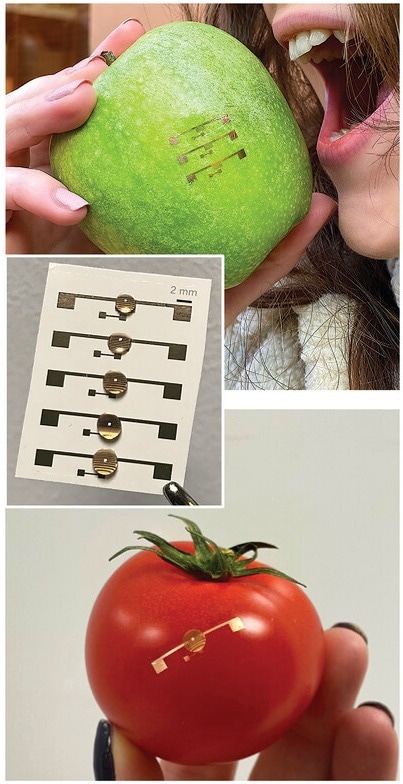Could edible robots be the future of food and medicine?

In a recent perspective review published in the journal Nature Reviews Materials, researchers collate and discuss ongoing progress in edible materials and how these materials can be used to develop robotic foods and edible robots. They reference more than 150 publications when describing how edible materials can form the basis of robot components, particularly the role and utility of these materials as direct energy sources, robot bodies, actuators, computational resources, and sensors. They additionally discuss manufacturing processes currently under development within the field, challenges presently faced in research and industrial adoption of these technologies, and examples of edible robots and robotic foods already present in today’s futuristic world.
Study: Towards edible robots and robotic food. Image Credit: Garan Julia / Shutterstock
Together, this review highlights the scientific, psychological, and technological questions that, when answered, will enable a novel generation of edible robots. These robots will, in turn, allow for the targeted delivery of medical and nutritional components to both humans and animals while also mitigating the waste and pollution that current robotic approaches generate.
Robots as food – orthogonal research, or untapped potential?
Imagine a world where you could order a pizza and have an automated robotic drone deliver it instead of your local pizza delivery guy. Given the robotic advances available today, this may not seem very far-fetched – some restaurants are already utilizing these approaches in addition to robotic waitpersons and chefs. What if I were to ask you to imagine then a world where the delivery drone itself could be eaten as dessert instead of having to be returned to the restaurant? Seems like something straight out of an H. G. Wells (the father of science fiction) novel, doesn’t it?

This is a digital photograph of honey-gated OFETs (HGOFETs) (in the middle), which have been transferred onto different food items: an apple (top) and tomato (bottom). A. S. Sharova, M. Caironi, Sweet Electronics: Honey-Gated Complementary Organic Transistors and Circuits Operating in Air. Adv. Mater. 2021, 33, 2103183. DOI: 10.1002/adma.202103183, https://onlinelibrary.wiley.com/doi/10.1002/adma.202103183
Surprisingly, a future wherein scenarios such as this occur may be imminent. Food processing and robot design, while appearing as distinct and independent areas of research, have substantial overlap in material properties, functionalities, and manufacturing. If leveraged correctly, these may present the future of novel solutions addressing nutritional, medical, and environmental challenges in the days ahead.
“Robots — especially soft robots — often take inspiration from biology, but whereas biological organisms become nutrition for other organisms at the end of their lifetimes, robots become waste and a source of pollution. The increasing adoption of robotic technologies for environmental applications encourages researchers to use biodegradable components and develop new ways to make the robotic life cycle more sustainable.”
Researchers are now aiming to take sustainable robotic design one step further – ‘edible’ robots that are degradable and digestible and provide nutritional or medicinal value. These devices have immense potential in healthcare, including delivering emergency nutrition, analyzing organ health, and delivering precision drugs while being significantly more eco-friendly than conventional approaches.
“…we use the term ‘edible robots’ when referring to devices that have the forms or functions of non-edible robots, and the term ‘robotic food’ when referring to devices with forms or functions typical of food.”
A growing body of literature elucidates the potential of biomolecule-derived materials in designing controllable and programmable edible robot components such as body materials (e.g., cellulose and chitosan), actuators (e.g., hydrogels, gelatine, and starch), sensors (e.g., cellulose-enriched rice paper for sensing humidity and pectin-based films for sensing temperature), and energy (e.g., activated carbon pellets).
Challenges in edible robotics
Computation, the process by which robots transform sensory data into actuation, remains one of the main challenges in edible robotics. Dedicated computational devices generally rely on semiconductor-like materials (i.e., transistors) to process information. While candidate biomolecules (e.g., carotenoids, food dyes, and fungi-derived xylindein) have been identified and described, their integration into robot foods remains unsuccessful mainly due to current performance, stability, and performance limitations.
Another noteworthy limitation is the lack of clinical validation of the safety of edible robotics. While most materials under development are digestible and therefore assumed to be ‘safe’ for human or animal consumption, the current scarcity of prototype robot foods prevents clinical trials from explicitly verifying their safety in biological/model systems. This validates the argument that while some robot food components (biomolecules) may be independently safe for consumption, the cross-reactivity of multiple of these constituents may result in unforeseen adverse outcomes.
Miniaturization and quality control are further complications that concern ‘smart’ edible robots designed to assess bodily function and perform medical interventions autonomously (e.g., precision drug delivery). Unlike their solely nutritional counterparts which are comparatively uncomplex and can be consumed in parts as required, these operational robots consist of many more components that must work in unison, with the failure of any one component potentially resulting in catastrophic consequences.
“Whereas some components, such as edible bodies, electrical circuits and sensors, already demonstrate reliable performance and may soon find application in intelligent drug delivery, smart packaging and environmental monitoring, other components, such as edible actuators and energy sources, still display lower power, endurance and reliability than their non-edible counterparts, or require the use of non-edible parts.”
Conclusions
The present review assumes a robot designer’s perspective in highlighting research on biologically derived materials with potential applications in edible robots and robot foods. These materials may serve nutritional, gastronomic, environmental, medical, and even ecological conservation functions in the near future and represent the cutting edge of both materials science and robotic fields. However, given the woeful dearth of information on the impacts of manufacturing (processing methods) on component integrity and safety, the incorporation of computation into ‘smart’ edible robots, and the clinical validation of their safety for human and animal consumption, substantial research is required before these technological wonders see the light of day.
These limitations notwithstanding, edible robotics and robot foods are well-positioned to revolutionize medical, environmental, and nutritional fields. Once current scientific, psychological, ethical, and technological questions have been addressed, a future wherein you can eat your pizza-delivery drone may not be too far away.



